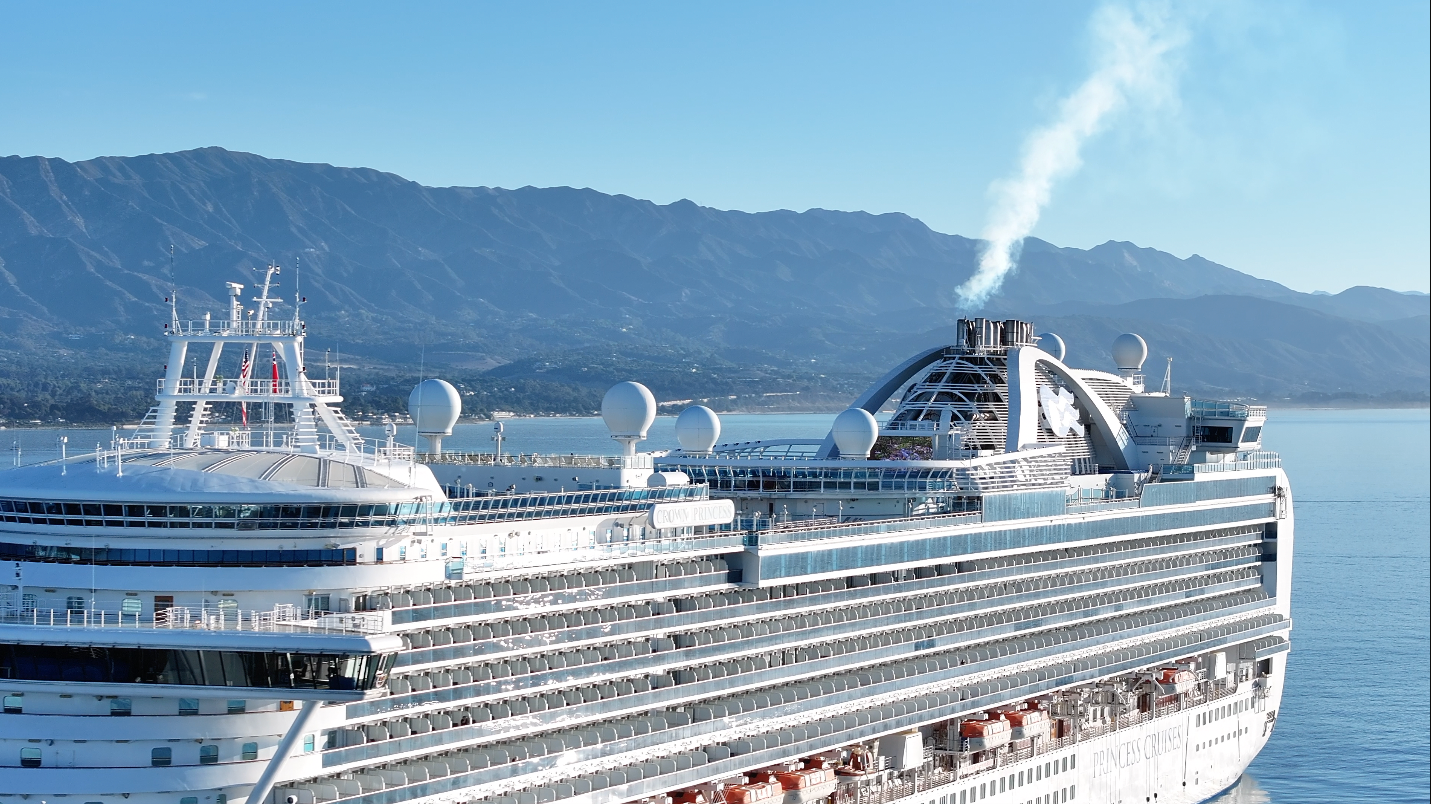Shaping the Future of Santa Barbara’s Cruise Ship Program
A Limit on Cruise Ships Limits Air and Water Pollution

It’s been hard not to notice in the past two years that the number of cruise ships visiting Santa Barbara has exploded. In the 10 years covering 2010-2019, the average number of ships visiting annually was 18 (itself a big jump from earlier years). In 2022 we saw 30 cruise ships visit Santa Barbara.
The presence of these ships passing through and parking outside the Santa Barbara Harbor comes at a cost. A few years ago, the state mandated that all cruise ships plug into electricity sources while docked. This is because the huge diesel engines they run to power these floating cities are a significant source of pollution, both in terms of particulate matter (the stuff we tried not to breathe during the Thomas Fire) and CO2 (the greenhouse gases, or GHGs, that are fueling skyrocketing heat and climate change). Santa Barbara is one of three cruise-ship destinations exempted from this requirement because we lack a port into which the ships can pull up and plug in.
That exemption means that every visiting ship is pumping pollutants into our air. You’d think, with 3,500 or so people packed into a ship, that this would still be better than an equivalent number of visitors coming by car, but according to the Santa Barbara County Air Pollution Control District (APCD), the opposite is true. Even if every one of those passengers drove up here from Los Angeles in pairs (so, 1,750 trips), those vehicle trips would contribute less than half the GHGs that a single ship emits. And since California cars are subject to strict rules about other pollutants, they would push far less particulate matter into the air that we breathe.
Add to that the fact that cruise ships are free to dump their waste once well offshore (and remember, water moves, so dumped waste travels) and they travel at speeds that put whales at risk. So, we must ask: Is this what Santa Barbara, the birthplace of the modern environmental movement, wants?
The overwhelming majority of speakers at every meeting of the Harbor Commission Cruise Ships Subcommittee has made it clear that they do not want a large program, with dozens of ships parking offshore and injuring our ecosystem. If it were up to the city’s residents, there would be a total ban on cruise-ship visits.
Nonetheless, we are not asking for a total ban. We do understand that cruise-ship visits are an important source of revenue to the Waterfront Department, which charges a per-head disembarkation fee for visiting ships that helps to fund their work. Those who come ashore may spend some money to help local businesses, although not hotels (so we don’t collect Transient Occupancy Tax from cruise-ship passengers, which would help with city revenue), or restaurants, since passengers pay for bountiful meals on board. Some say that an initial cruise-ship visit may encourage passengers to come back at a future time, but there is limited evidence that this is a significant driver of future tourism. To the contrary, cruising.org claims that 83 percent of its passengers say a cruise will be their next vacation.
Since Santa Barbara is a leading light in the environmental movement, we ask the city to cap the number of cruise ships at the 2010-2019 average of 18, and to prioritize the ships that are doing their best to prevent air and water pollution.
The next meeting to discuss the City’s Cruise Ship Program will be held by the city’s Harbor Commission. It is scheduled for Thursday, February 15, at 6:30 p.m., in the City Council Chambers at Santa Barbara City Hall. The address is 735 Anacapa Street, Santa Barbara, CA, 93101. Together we can work to make changes to the Cruise Ship Program that will reduce the risk and impact of cruise ships on our local environment and public health. For more information on how you can get involved, please contact cruiseship@sbck.org.
Ted Morton is executive director of Santa Barbara Channelkeeper, Alex Katz is executive director of Environmental Defense Center, Sigrid Wright is CEO/executive director of Community Environmental Council, Ken Hough is executive director of Santa Barbara County Action Network, Jim Taylor is group chair of Sierra Club Santa Barbara Group, Das Williams is 1st District Supervisor for Santa Barbara County.
